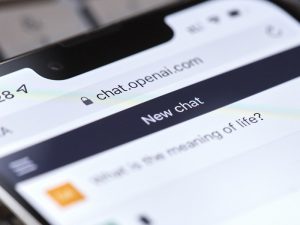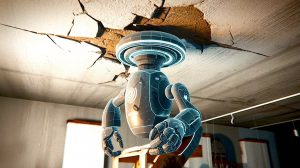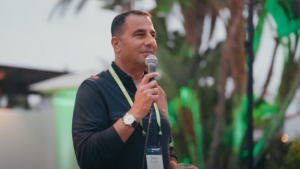Top 10 Internet of Things developments in 2013
A top trend this year was The Internet of Things revolution, bringing about some fascinating innovations for the consumer market in particular. Throughout 2013 we featured several connected gadgets that have made the IoT revolution a reality, ranging from wearable tech to smart home solutions.
![]()
As we approach 2014, let’s recap on the top 10 Internet of Things developments from this year:
Top 1o IoT Developments of 2013
10. Memoto
They say pictures speak a thousand words, so what better way to log your life than through photos? Memeto is a lifelogging tool, capturing special moments without you having to stop to take snapshots. This little camera helps you log your life by capturing photos automatically, while the mobile app organizes it for you so you can avoid those hangover moments where you can’t remember anything that happened in the last 24 hours.
.
9. Tikker
This device delivers a different take on the Quantified Self revolution. Instead of pushing you to achieve your goals by presenting you with a log of your activities, Tikker tells you how much time you have left. The knowledge of how much time you have left in this world can spur people do more things, live life to the fullest, and appreciate whatever good they already have in their lives. It’s like a tool to make you more appreciative. Though Tikker is not an exact science, having a clock that counts down to your alleged last remaining second in this world can bring a new perspective on the here and now.
.
8. Nymi
![]() Nymi is a bracelet that uses the electrical activity radiating from a person’s heart, or ECG, to identify the user as well as connect with other devices. Because electrical activity is something produced inside a person’s body, it’s unlikely to leave a mark, plus each person gives off unique electrical activities.
Nymi is a bracelet that uses the electrical activity radiating from a person’s heart, or ECG, to identify the user as well as connect with other devices. Because electrical activity is something produced inside a person’s body, it’s unlikely to leave a mark, plus each person gives off unique electrical activities.
From the moment you put on Nymi, it constantly authenticates the wearer. This makes it more secure, as it learns to differentiate when you’re relaxed, tired, afraid or excited. So no matter the circumstances, Nymi will always work.
.
7. No More Woof
This wearable device for your dog aims to translate your dog’s EEG reading to understandable words such as “I’m Hungry,” “I’m tired,” and “Who are you?” These responses are still very limited, but at least No More Woof offers insight to what your furry pal means when he whines or bark. It uses sensors to get your dog’s EEG and translate them into human words.
.
6. Smarter roads
The UK is working on turning its A14, the busy road connecting Birmingham and Felixstowe, into a super highway by connecting it to the internet. The project will install a network of sensors along the 50-mile stretch of the A14 to monitor traffic by sending signals to and from mobile phones in moving vehicles. The aim is to decongest traffic. And there’s more – these smarter roads can be equipped with wireless chargers so electric vehicles can juice up while on the go or waiting for passengers, or even while parked.
.
5. Smart panels
![]() Car batteries can only last a few years, while batteries on EVs only last for miles. Volvo and the Imperial College of London are working on a project that would transform the panels of future vehicles into batteries. The panels will be made using a combination of carbon fibres and a polymer resin to create a very advanced nanomaterial and structural supercapacitors.
Car batteries can only last a few years, while batteries on EVs only last for miles. Volvo and the Imperial College of London are working on a project that would transform the panels of future vehicles into batteries. The panels will be made using a combination of carbon fibres and a polymer resin to create a very advanced nanomaterial and structural supercapacitors.
The reinforced carbon fibres sandwich the new battery and are molded and formed to fit around the car’s frame, such as the door panels, the boot lid and wheel bowl, substantially saving on space. The material is recharged and energised by the use of brake energy regeneration in the car, or by plugging into a main electrical grid. The energy is transferred to the electric motor, which is discharged as it is used around the car. Tests show that the material is able to charge and store energy faster than conventional batteries, while remaining strong and pliant.
.
4. Nest + Sunrun
Nest Labs partnered with Sunrun to offer a money-saving, solar power-maximizing solution. Those who purchase a Sunrun package will be given a free Nest Learning Thermostat which retails for $249. Sunrun offers a way for homes to use solar energy without having to deal with costly installations and solar panels. This bundle ensures that homes will be utilizing energy efficiently, as well as producing its own power without the worry of spending too much.
.
3. Zero Home
Home energy has been one of the most catalyzing market opportunities for IoT, and the industry has really taken off in 2013 with the launch of an unprecedented number of automation solutions. The Zero Home is among the most noteworthy initiatives, as a collaboration between Garbett Homes and Vivint. Vivint provides the house smart home automation solutions, while Garbett Homes built the home, complete with solar panels, energy management systems and even charging ports for electric vehicles. This home not only allows for remote monitoring and controlling, but is also able to produce energy more than the house can consume.
.
2. Argus II
![]() Argus II is like Google Glass for your retina. The device’s visual processing unit sends images it detects to an electrode array implanted in the retina. Argus II enhances the outline of objects so the user can identify them better. It doesn’t really provide a way for the user to see an object in a more detailed manner, but it is a step in that direction. Second Sight can continue to improve the sight of patients wearing Argus II by improving the visual processing unit and fine-tuning the software that feeds the implant.
Argus II is like Google Glass for your retina. The device’s visual processing unit sends images it detects to an electrode array implanted in the retina. Argus II enhances the outline of objects so the user can identify them better. It doesn’t really provide a way for the user to see an object in a more detailed manner, but it is a step in that direction. Second Sight can continue to improve the sight of patients wearing Argus II by improving the visual processing unit and fine-tuning the software that feeds the implant.
.
1. Cancer-sniffing knife
Hungarian chemist Zoltán Takáts along with his Imperial College London team with Jeremy Nicholson, a biochemist who heads Imperial College’s department of surgery and cancer, have come up with the iKnife, an intelligent knife that can accurately differentiate cells from normal and tumor tissues from different organs such as the breast, liver, and brain, and can even determine if the origin of the tumor if the sample was a metastasis or it originated from another organ. The iKnife aims to help make surgeries faster and have better results.
photo credit: Agnes_F via photopin cc
A message from John Furrier, co-founder of SiliconANGLE:
Your vote of support is important to us and it helps us keep the content FREE.
One click below supports our mission to provide free, deep, and relevant content.
Join our community on YouTube
Join the community that includes more than 15,000 #CubeAlumni experts, including Amazon.com CEO Andy Jassy, Dell Technologies founder and CEO Michael Dell, Intel CEO Pat Gelsinger, and many more luminaries and experts.
THANK YOU





















